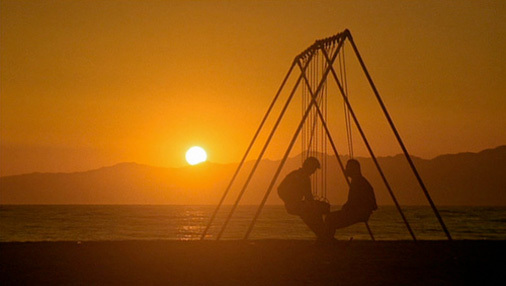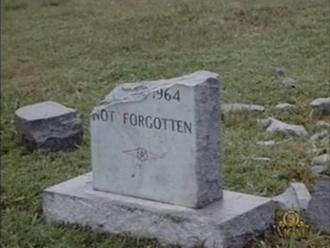Ask the Professor: Did “Jaws” establish the tyranny of the happy ending?
Professor Marc Lapadula: Before Jaws (1975), movie endings were far less motivated by financial gain. Jaws enjoyed unprecedented box office returns. It also spawned multiple sequels, thanks to the improbable survival of its main characters, who by all accounts should have died. With such incredible, ongoing money-making potential, Jaws birthed the modern Hollywood franchise.
In the late 60s to early-to-mid-70s, movies faced less pressure to reach a happy ending and keep main characters alive. If you look at the Wild Bunch (1969), they all die at the end. If you look at Easy Rider (1969), both characters get killed. They’re just massacred on the side of the road.
Chinatown (1974) is about the destruction of the innocent. The one person you want to see prevail, Evelyn Mulwray (Faye Dunaway), is killed. Films of that era didn’t go out of their way to end with everybody dead or to be totally dark or defeatist. But if the story ultimately had to go in that direction, they weren’t afraid to go there. Once the 80’s came along, they weren’t allowed to go there.
Take Tequila Sunrise (1988), directed and written by Robert Towne, starring Mel Gibson and Kurt Russell. It’s absolutely pointing toward the death of at least one of the principals that you’re rooting for. But no, at the end, a happy ending is grafted on out of nowhere. And you’re wondering: why? Well, because it’s the 80’s. And that’s just how movies ended in the 80’s. The stars had to be alive to come back for the sequel. We don’t want to shake up the audience too much.

Mel Gibson and Kurt Russell in Tequila Sunrise (1988)
Mississippi Burning (1988) is another great example. Willem Defoe is excellent, Gene Hackman tremendous, Francis McDormand — excellent performances, beautiful scenes — but at the very end, it has a happy ending, and how can a story like that have a happy ending? It makes people think, “Well, gosh, they really took care of all those racists down there.” But they didn’t. The conflict is going to go on for decades after that. But the movie was afraid to take that story to its true conclusion, which was inconclusive, in the sense that they couldn’t extirpate all the bad guys or round up all the bad guys. Racists down there in that culture in that time, they were born and raised into it. But the end of that movie makes you think, The FBI really did the right thing.

Tombstone from the end of Mississippi Burning (1988)
It’s all about money. And from a financial perspective, you wonder, in these movies in the late 60s to early 70s, what were the filmmakers thinking? I mean, why at the end of Easy Rider are these guys killed? Why not just let them ride off into the sunset and come back for another day?
There are certain movies that call for upbeat, happy endings. There’s nothing wrong with that. But at the same time, if that’s all we get — if all we get is, no matter what happens, in the end everything’s gonna be okay — then, as a viewer, we’re not really taking any risks going into the cinema. It’s just a spectacle arena. It’s just entertainment. And I ask my movies to be more than that.
Read more from Ask the Professor: Why is the downbeat ending of “Easy Rider” crucial to its artistic value?

